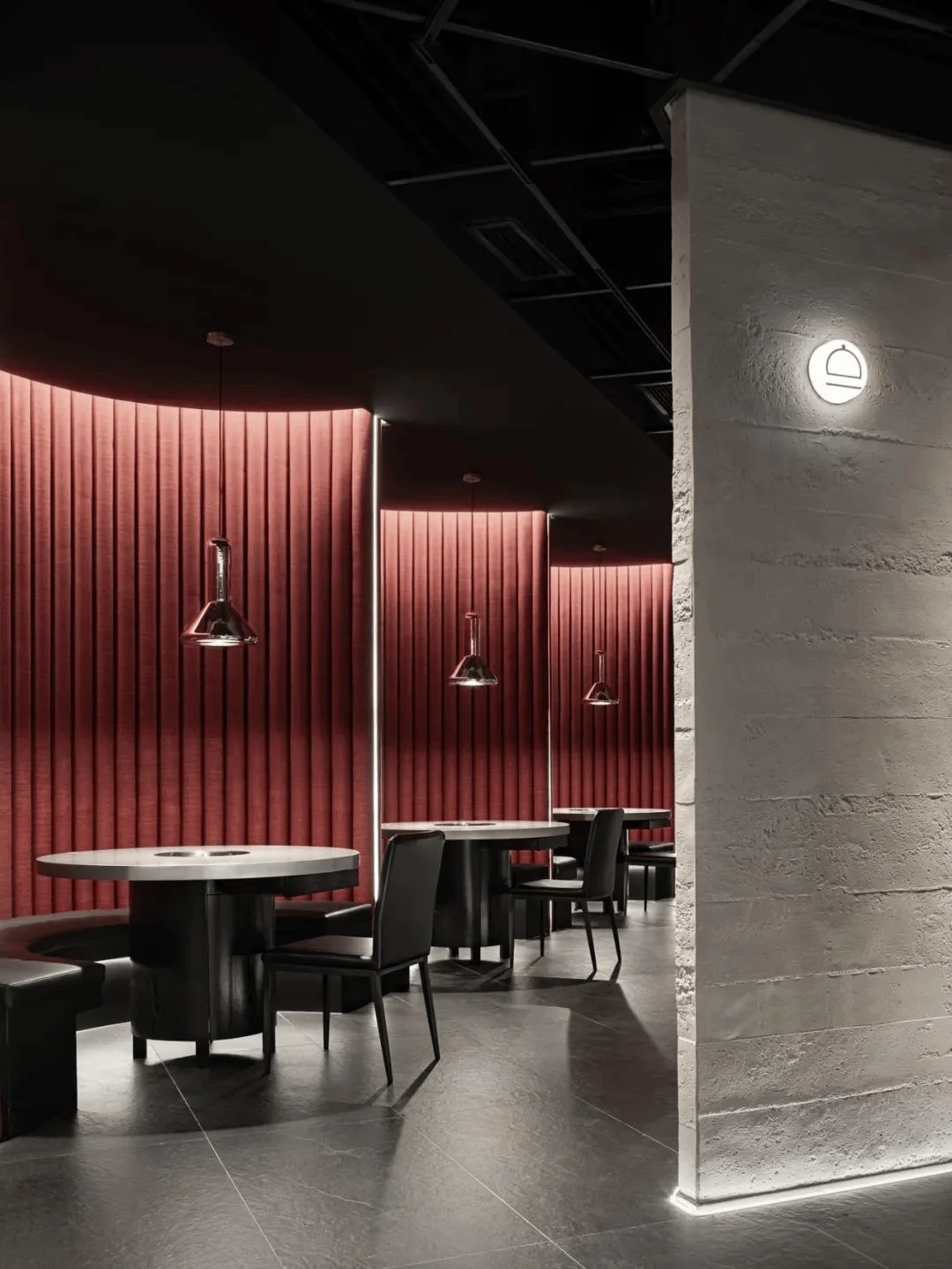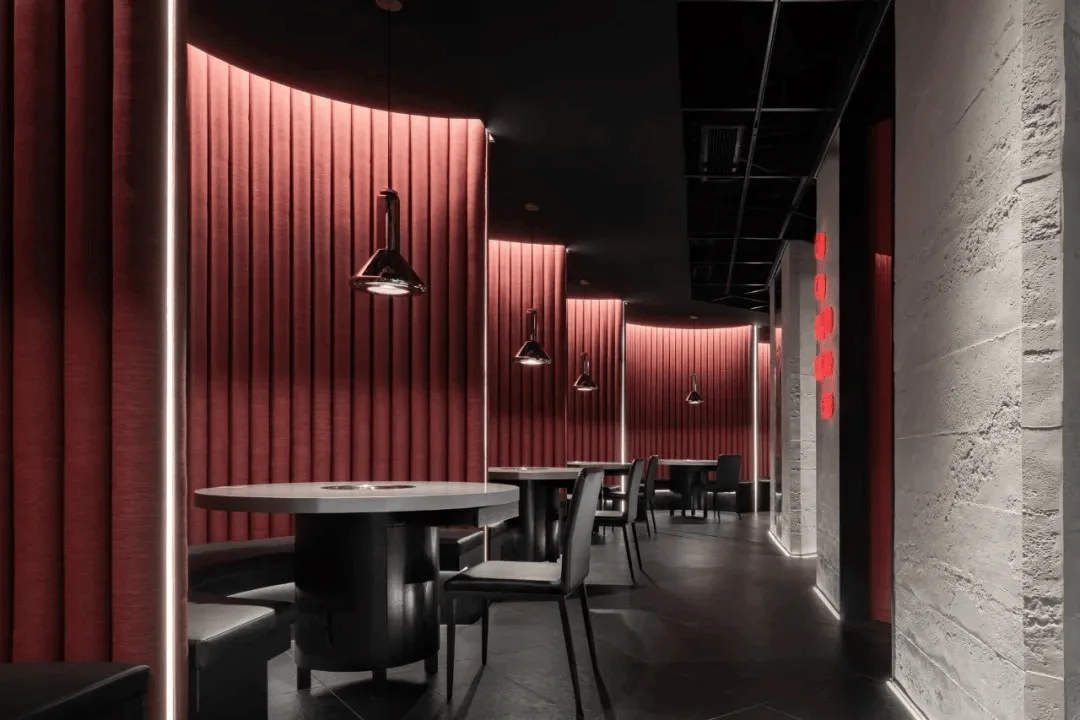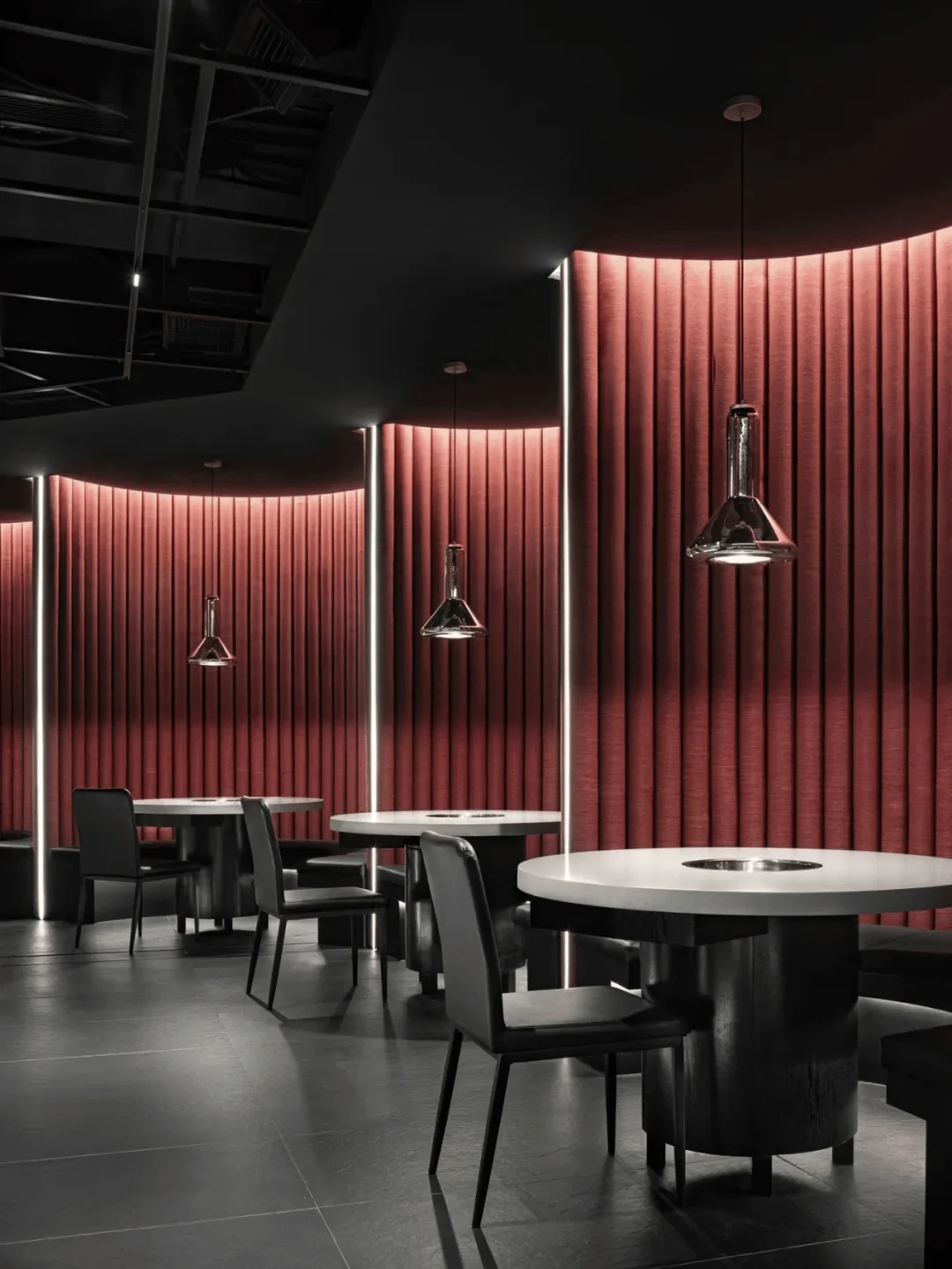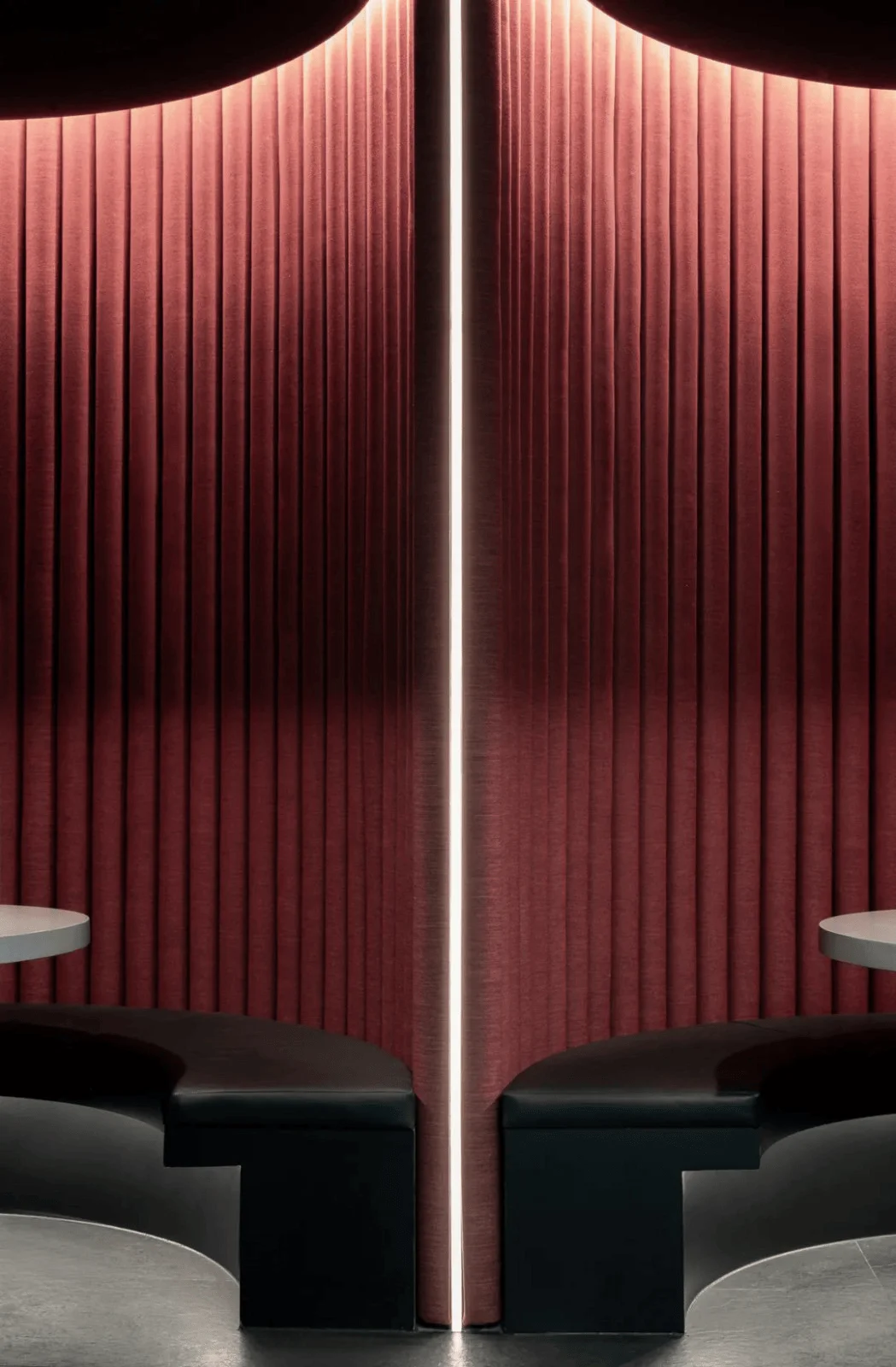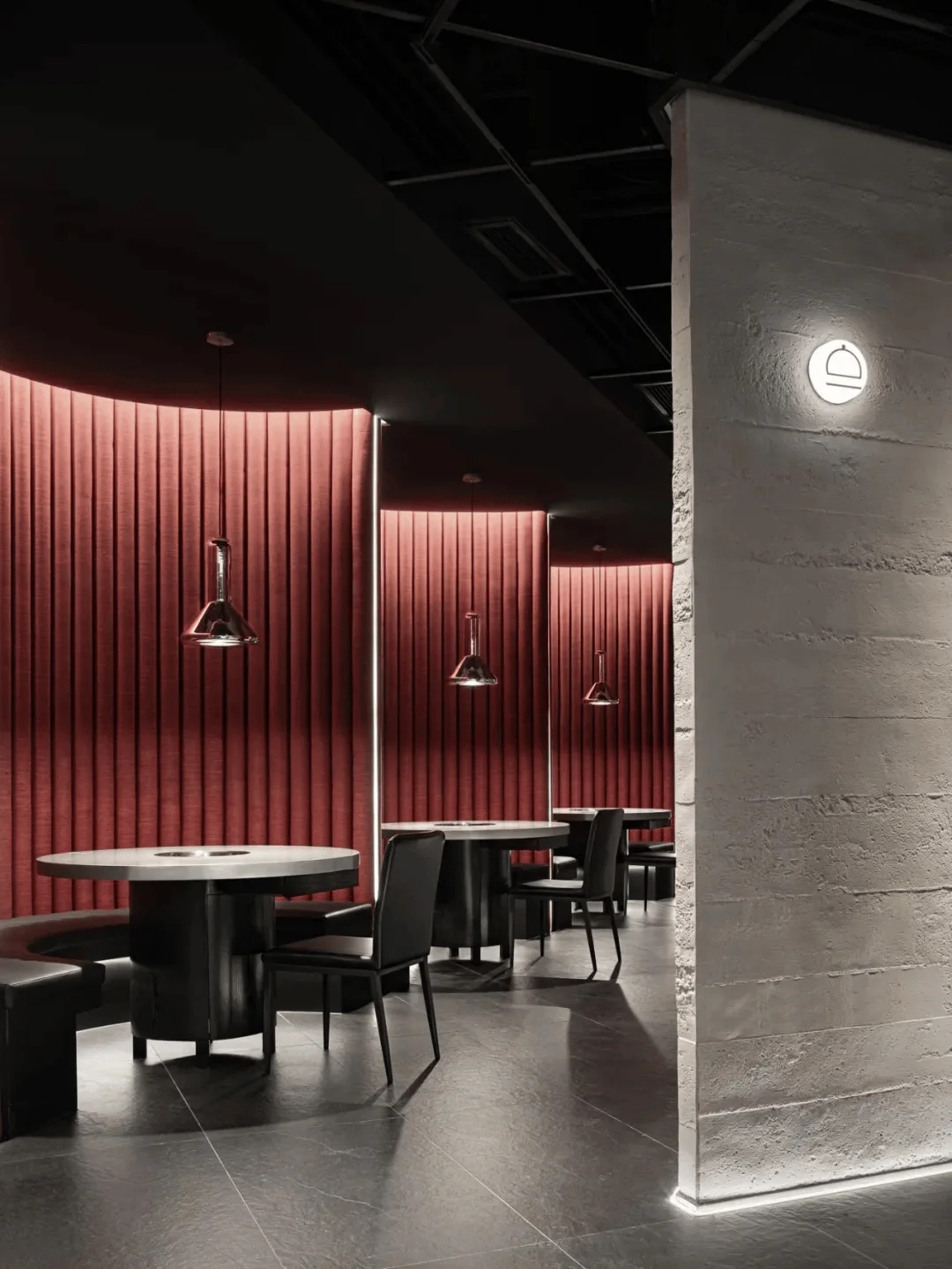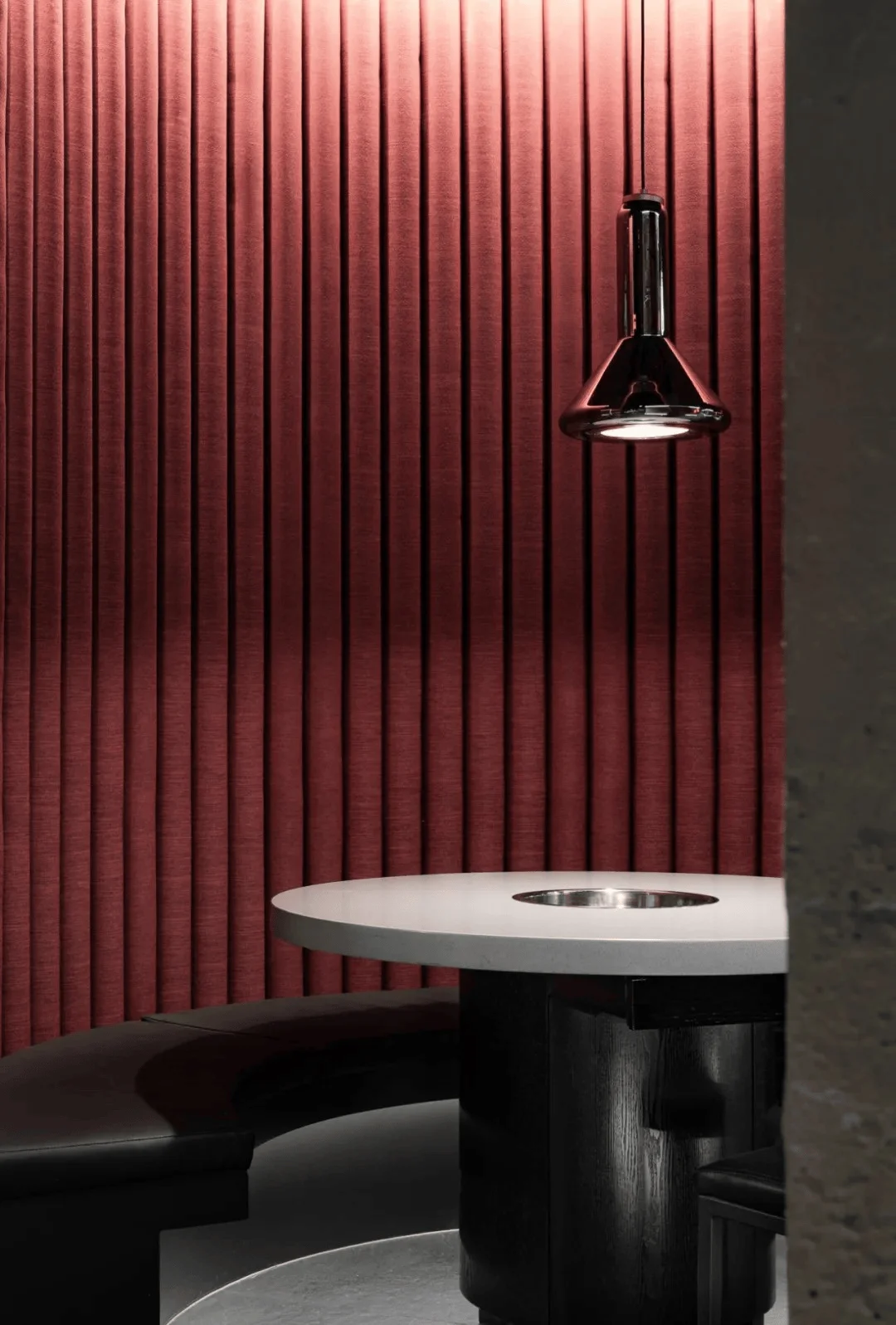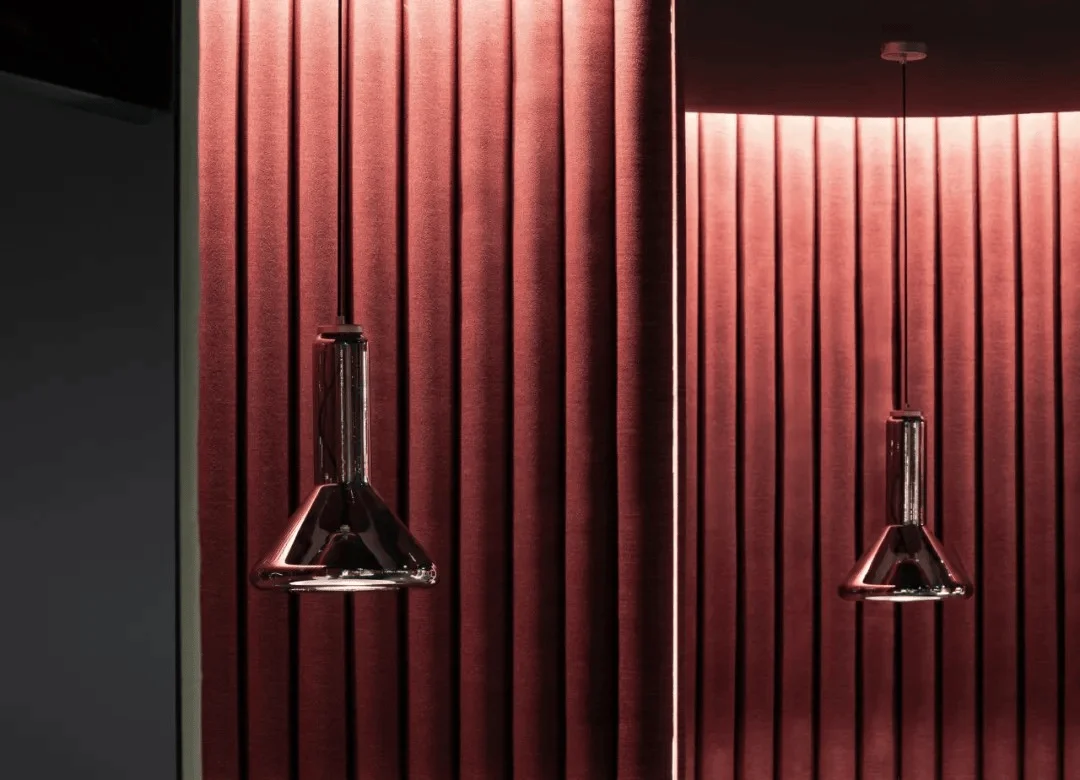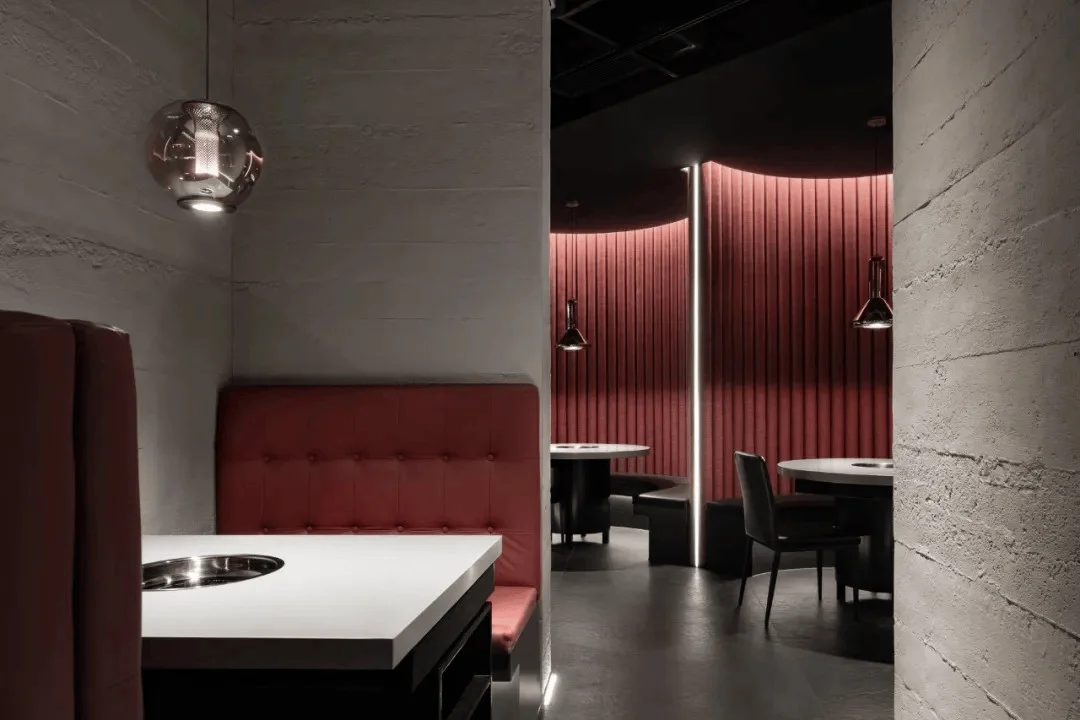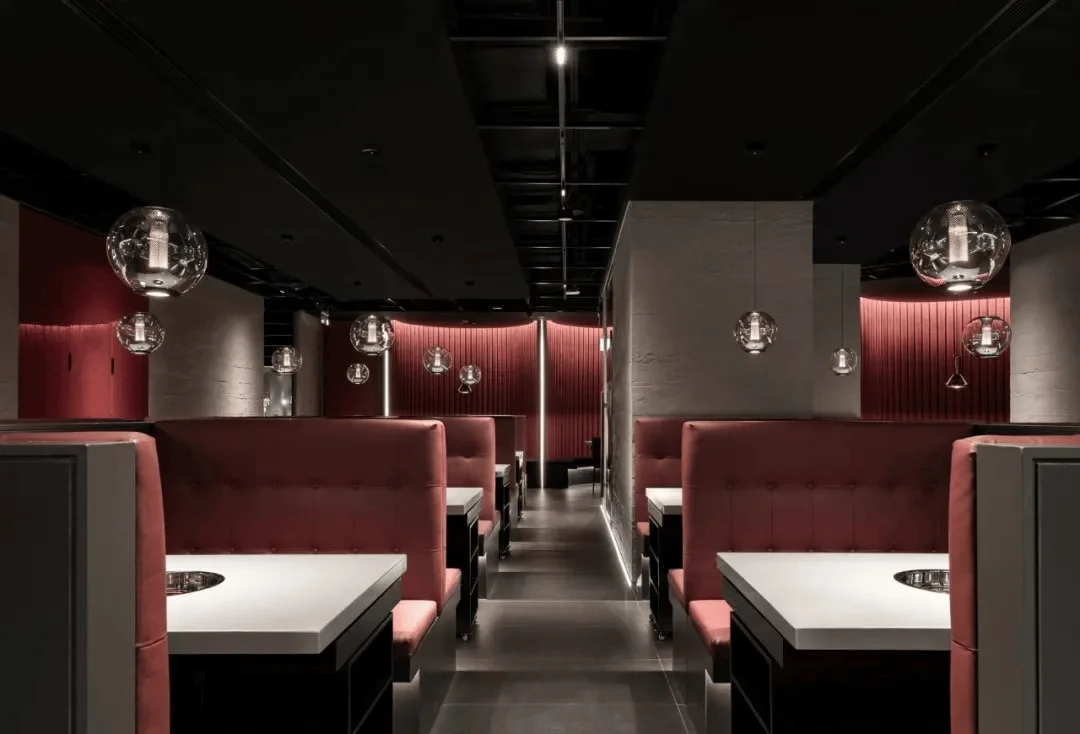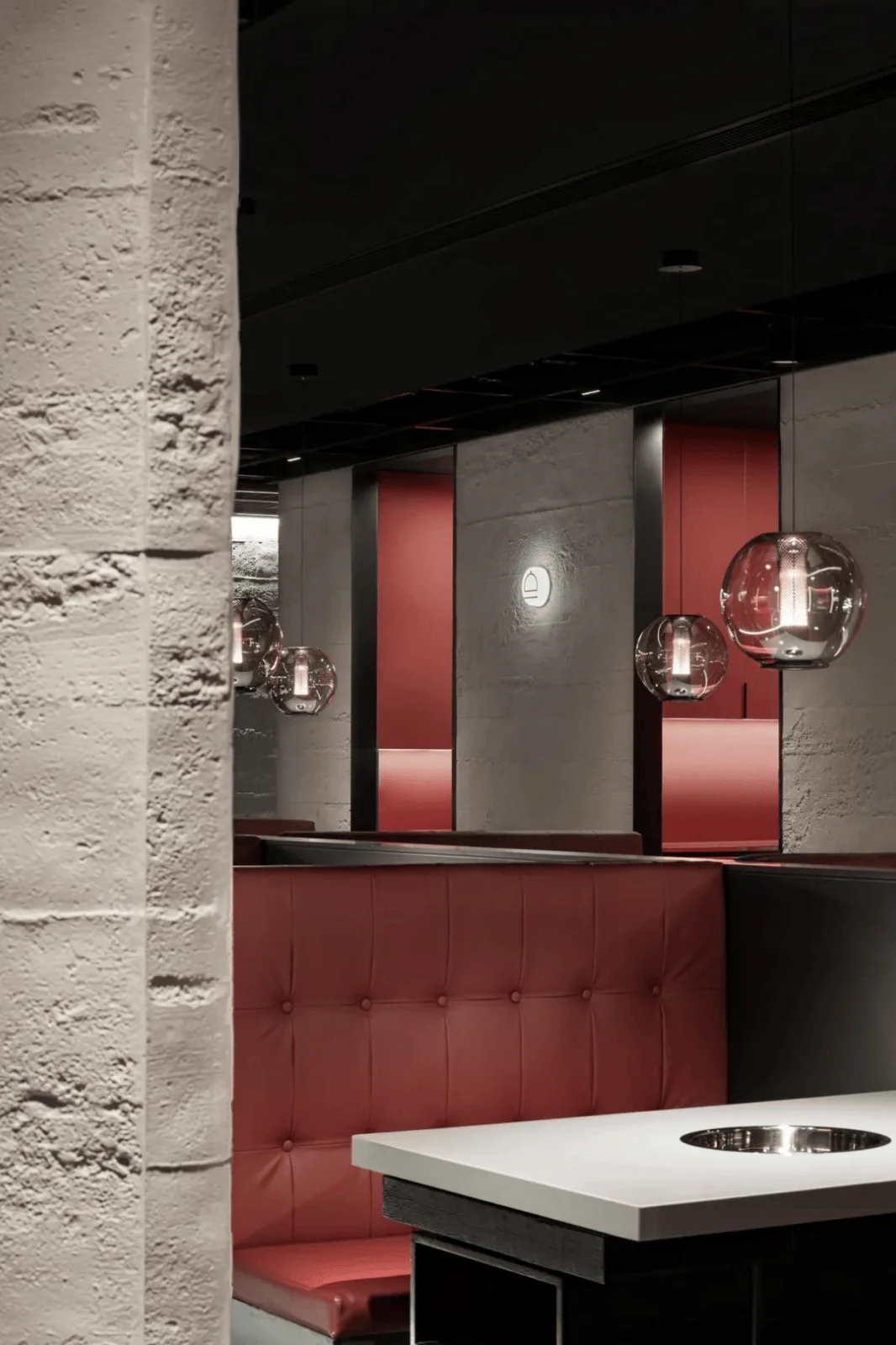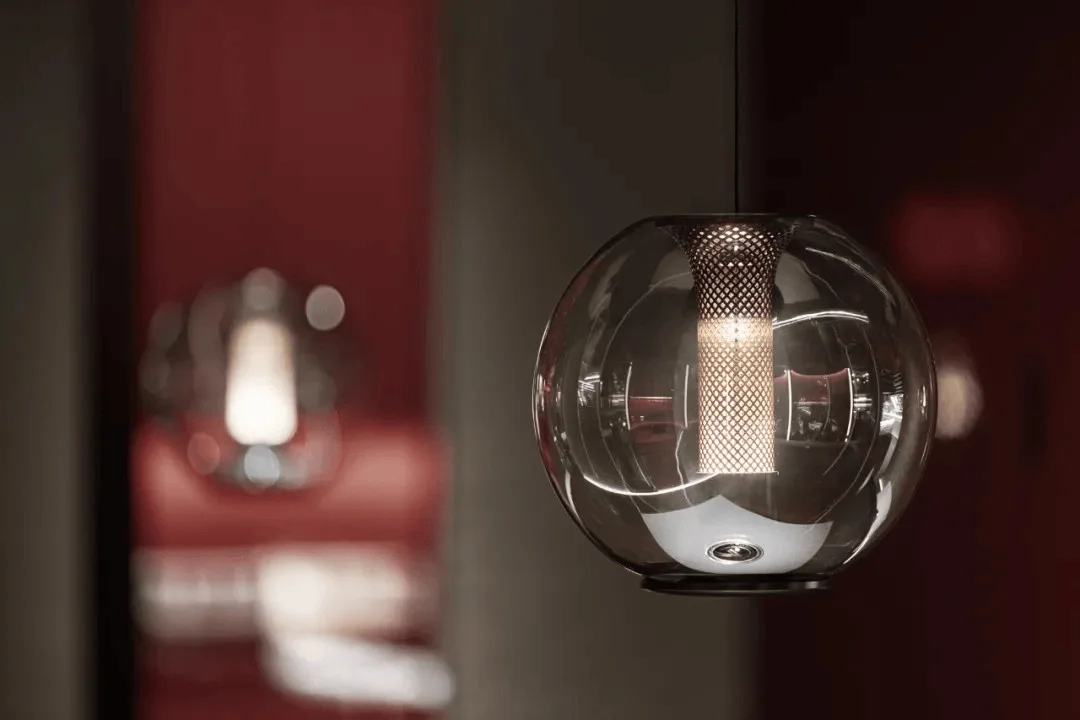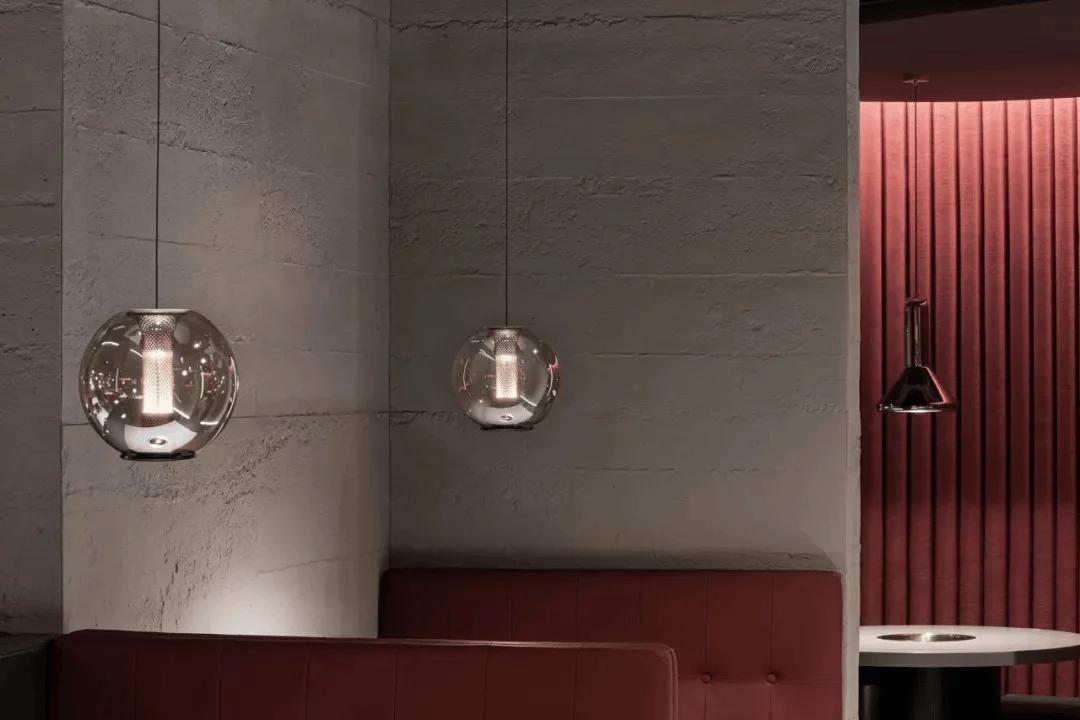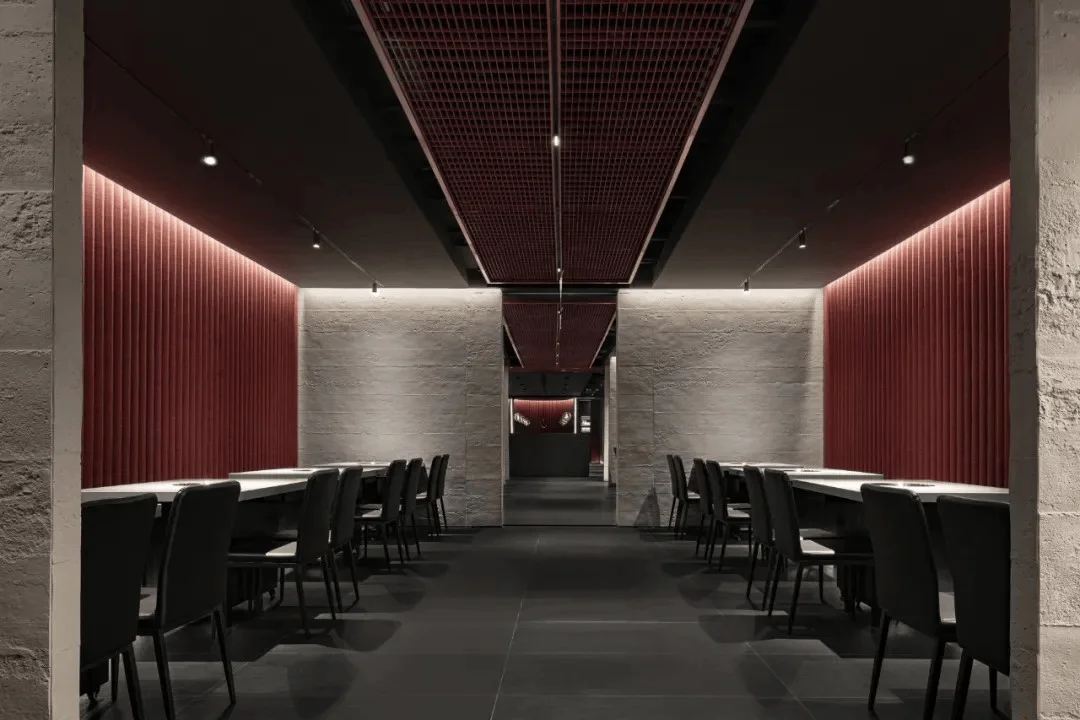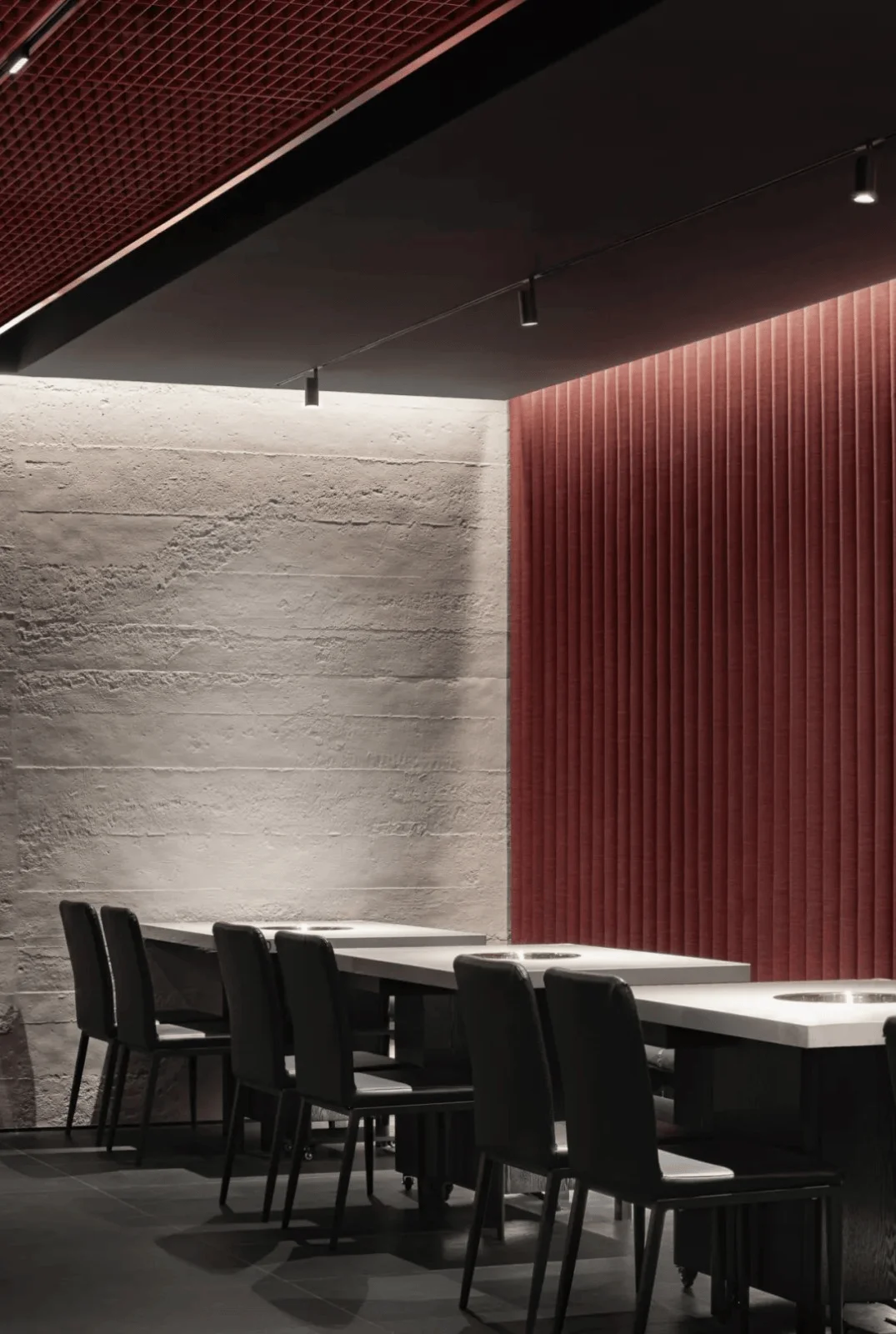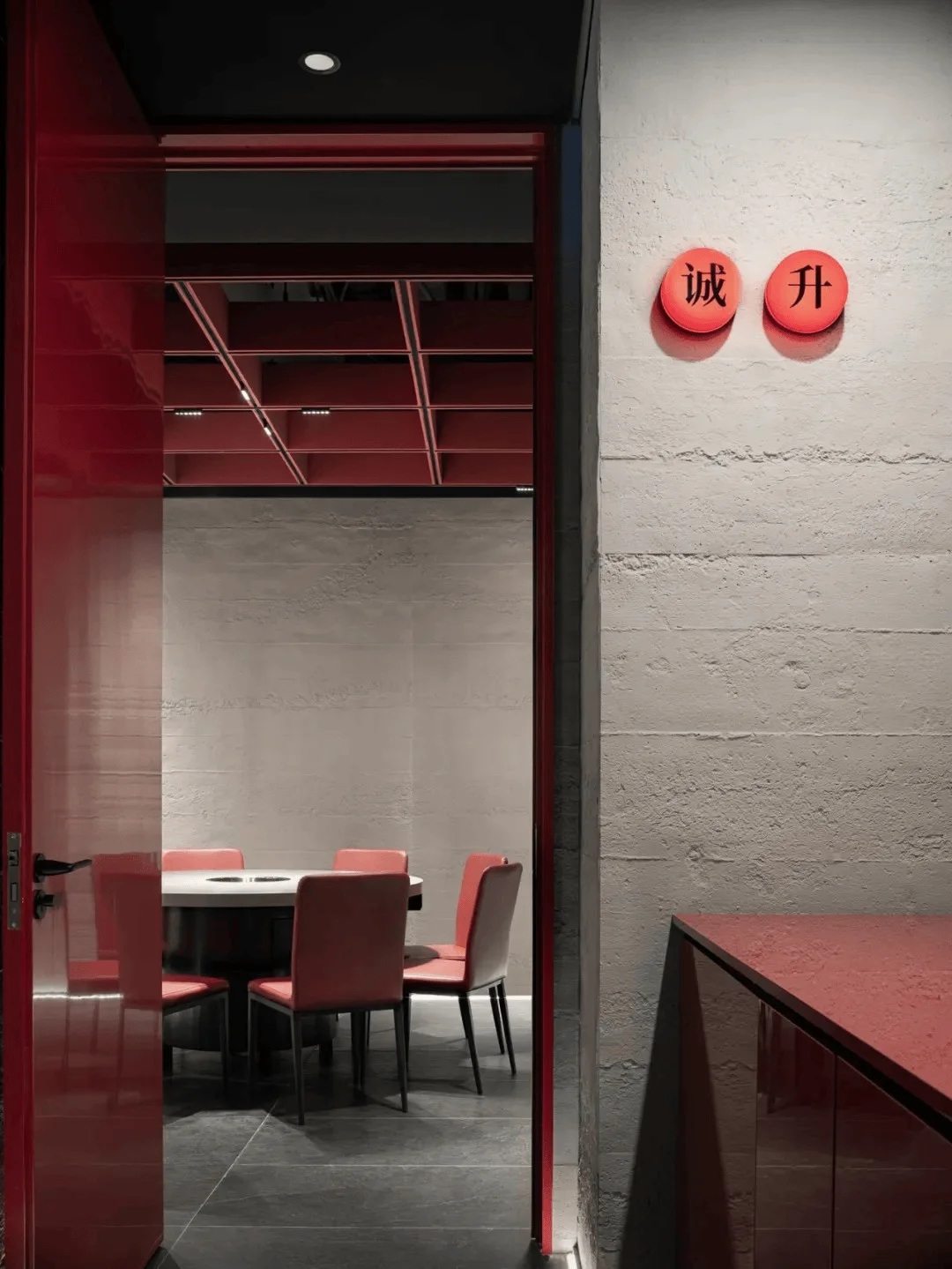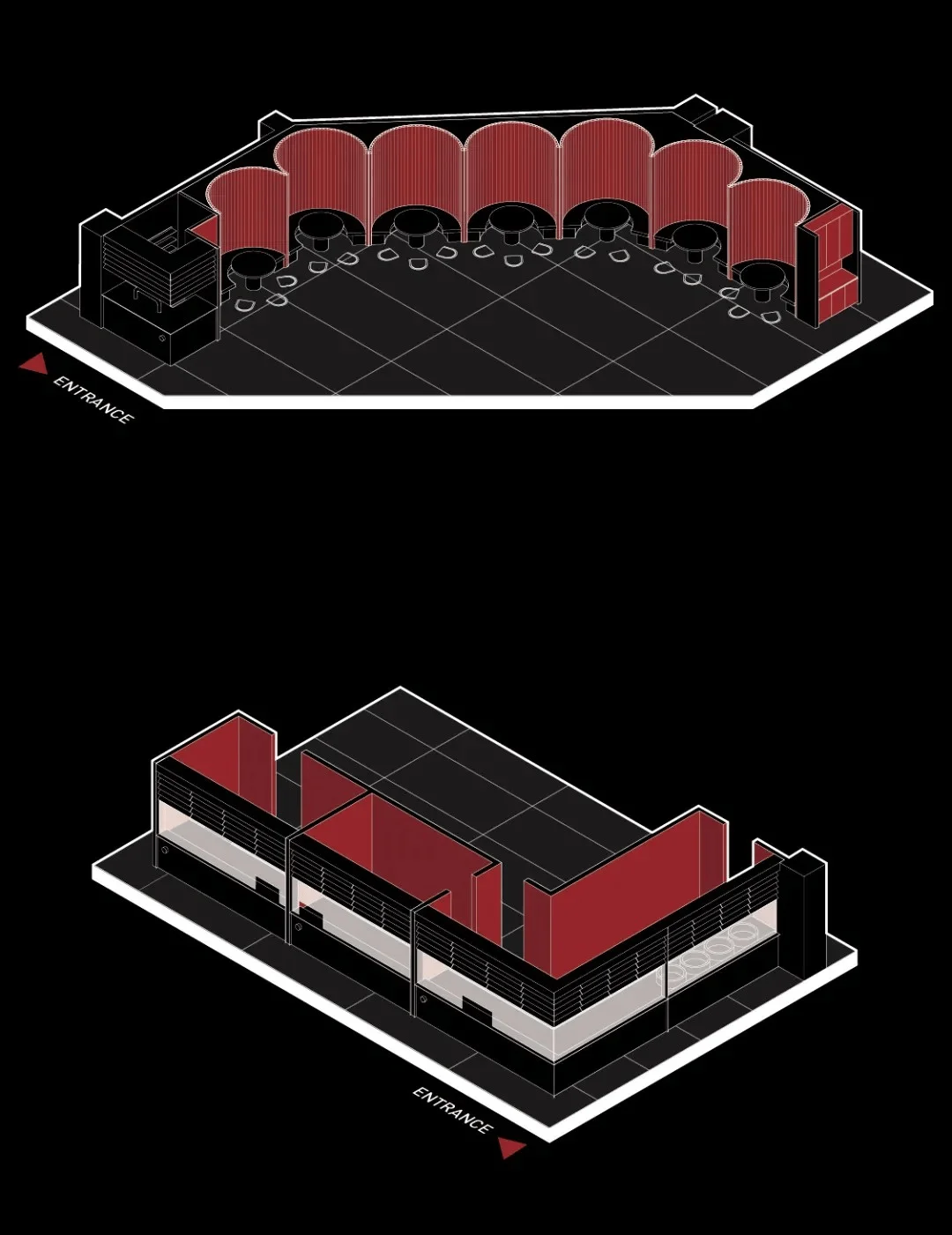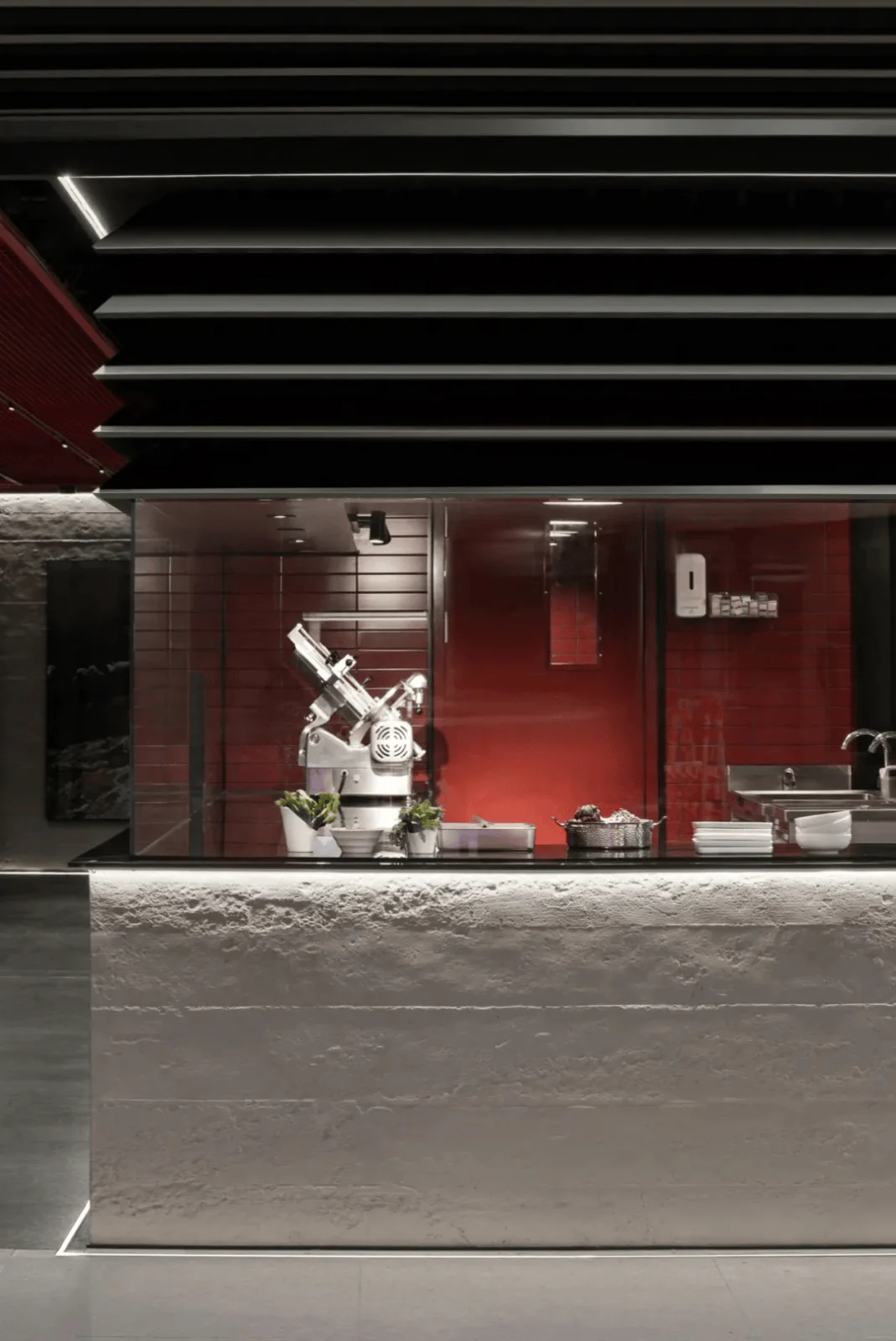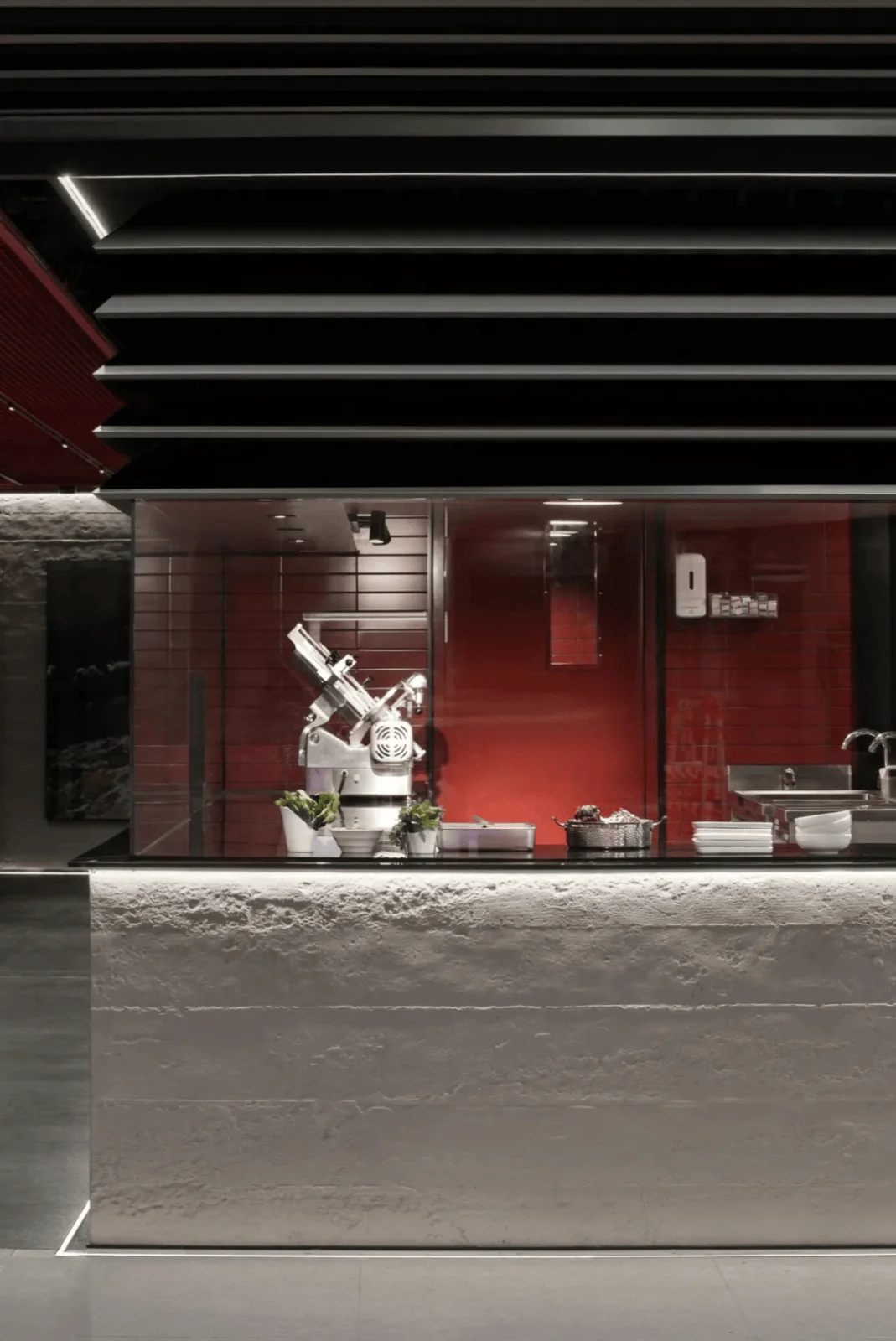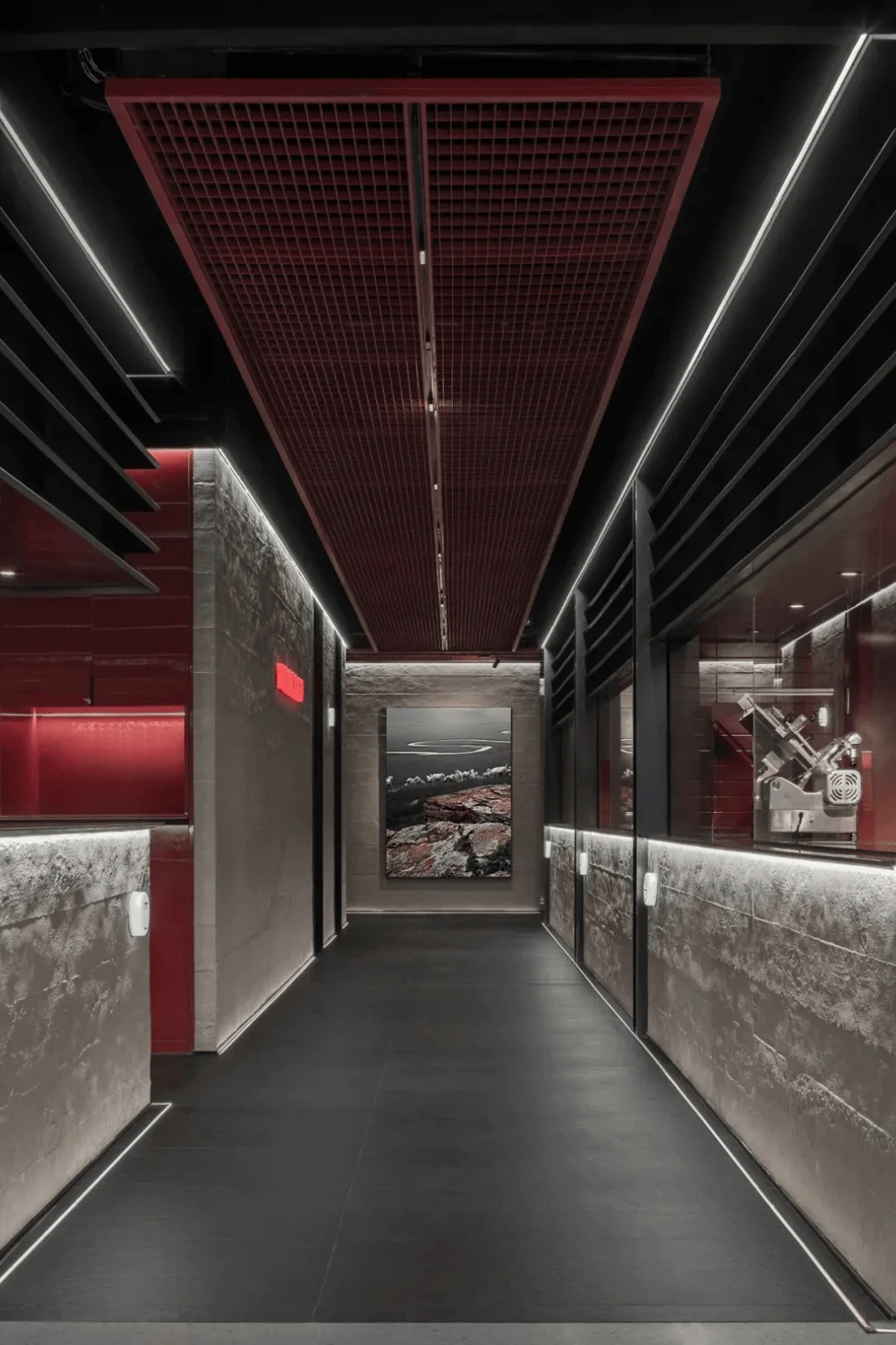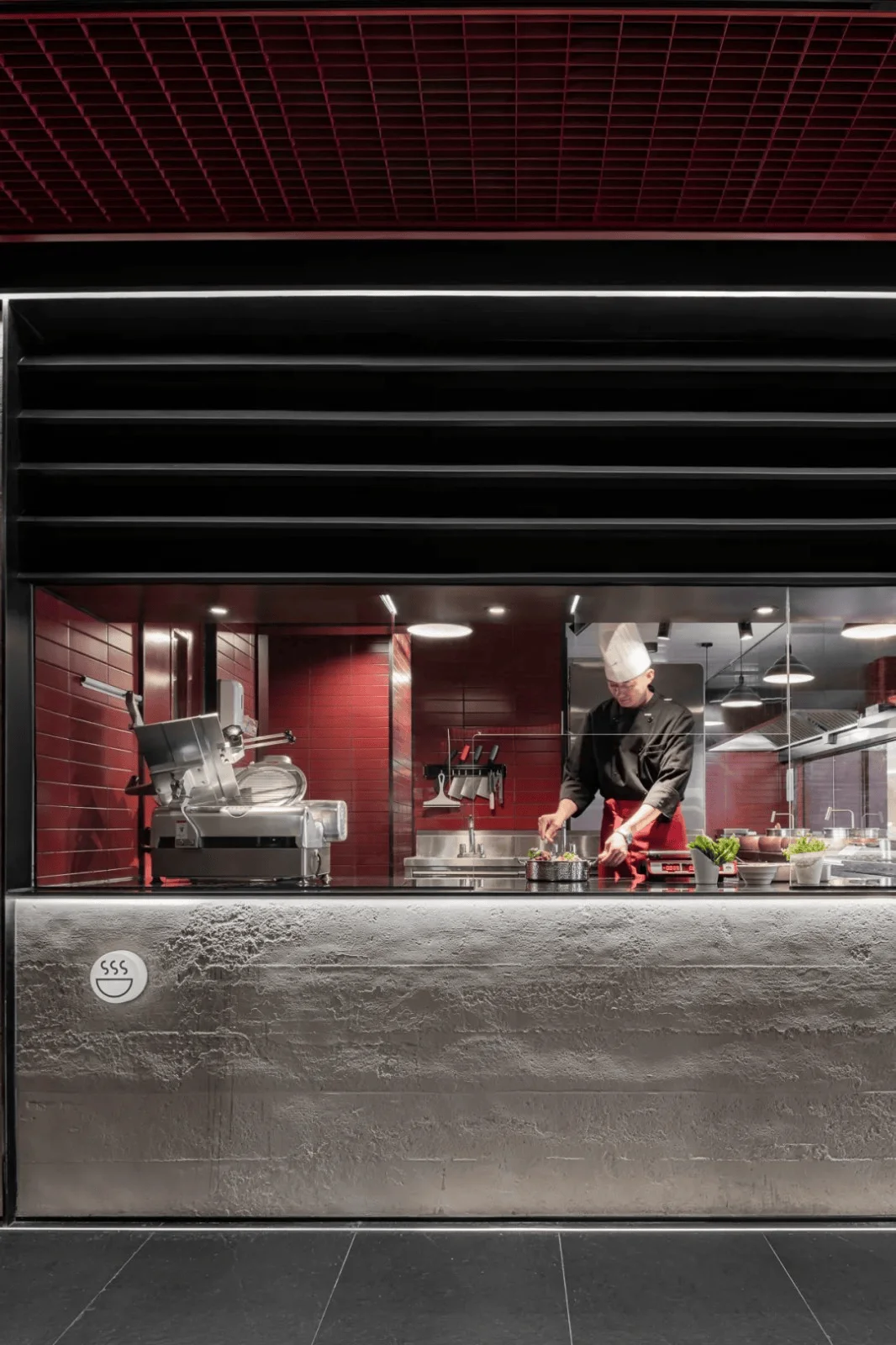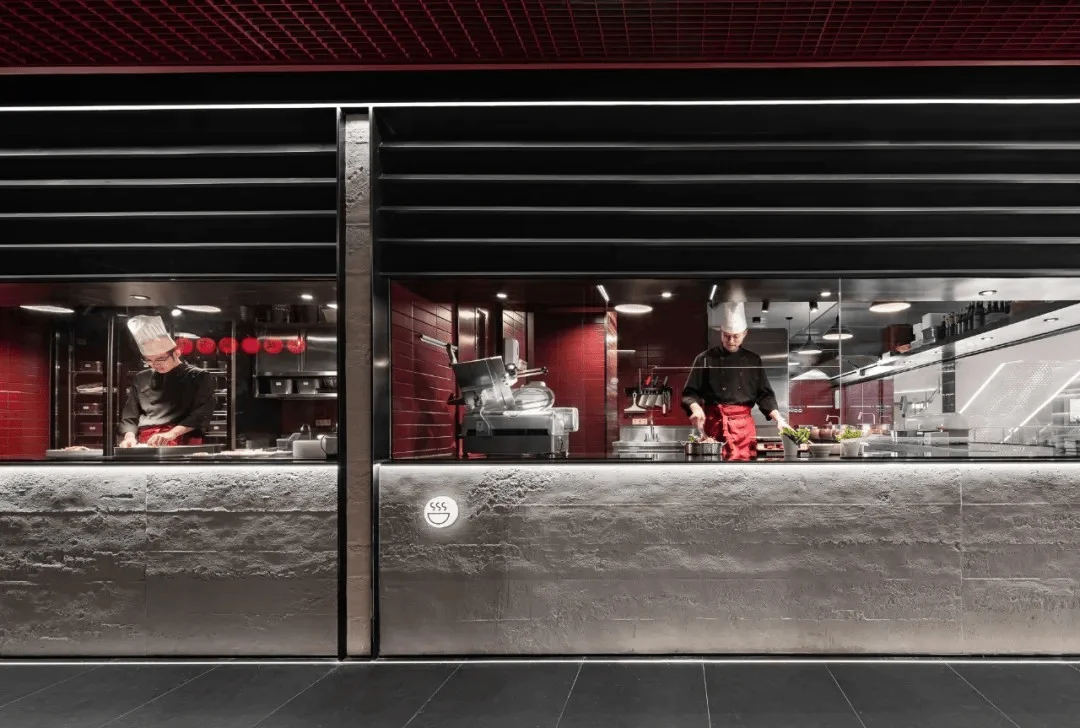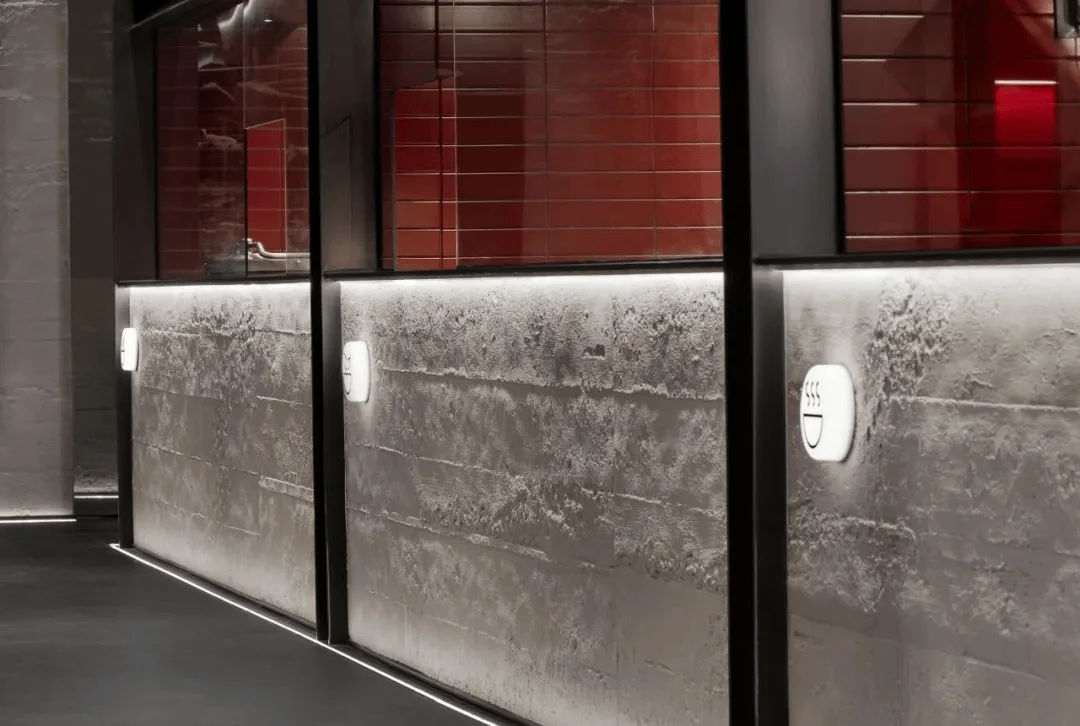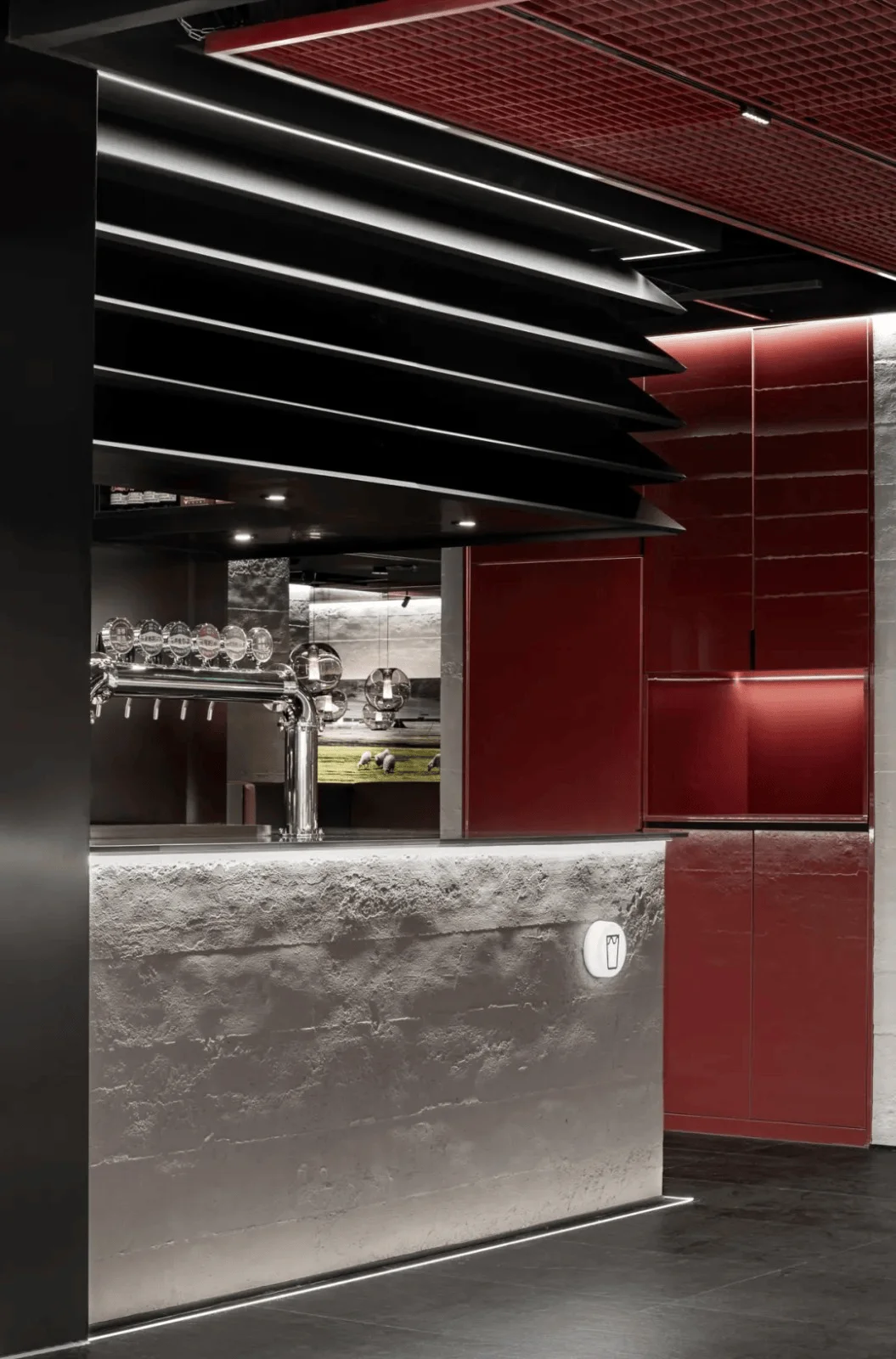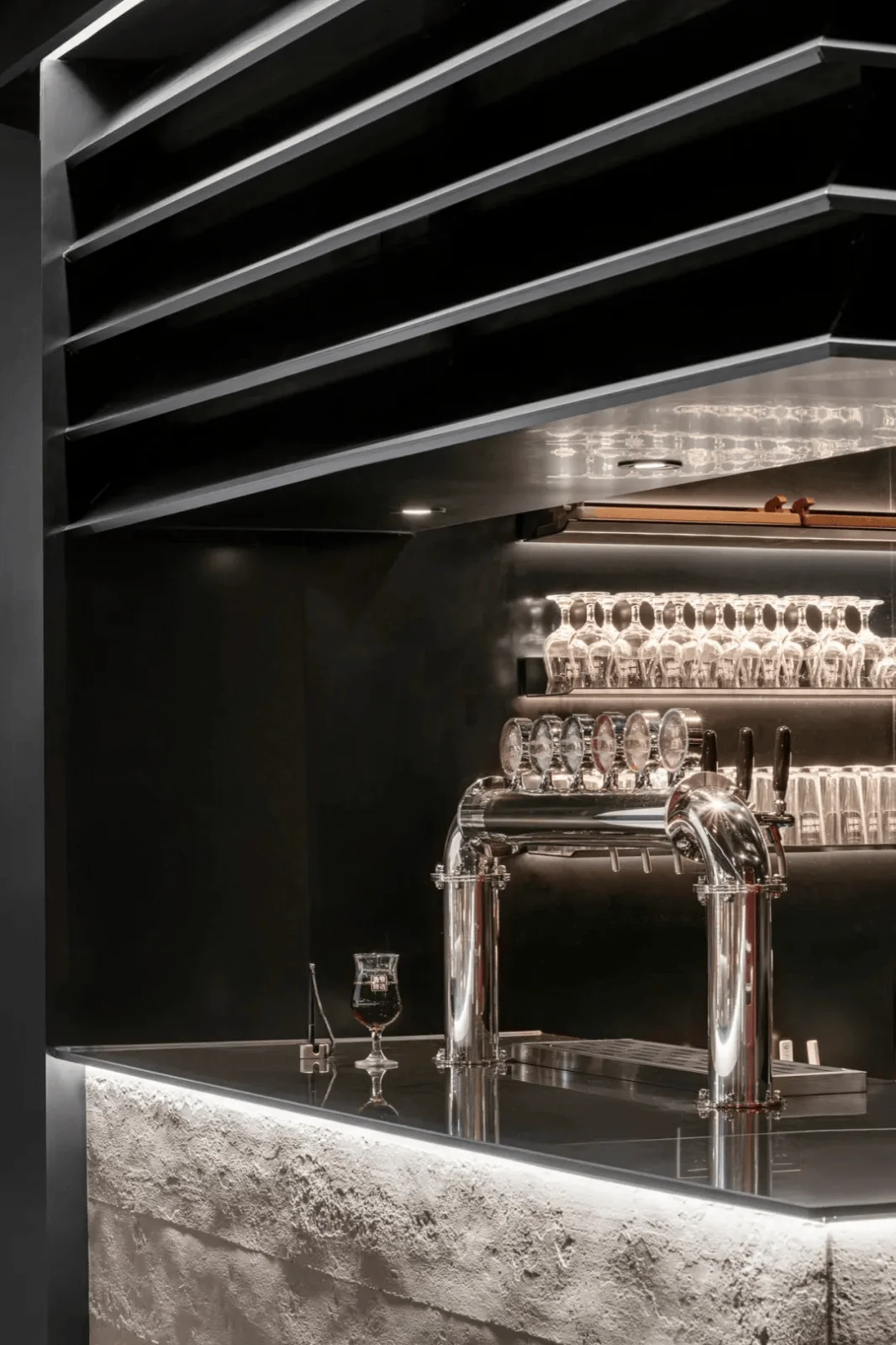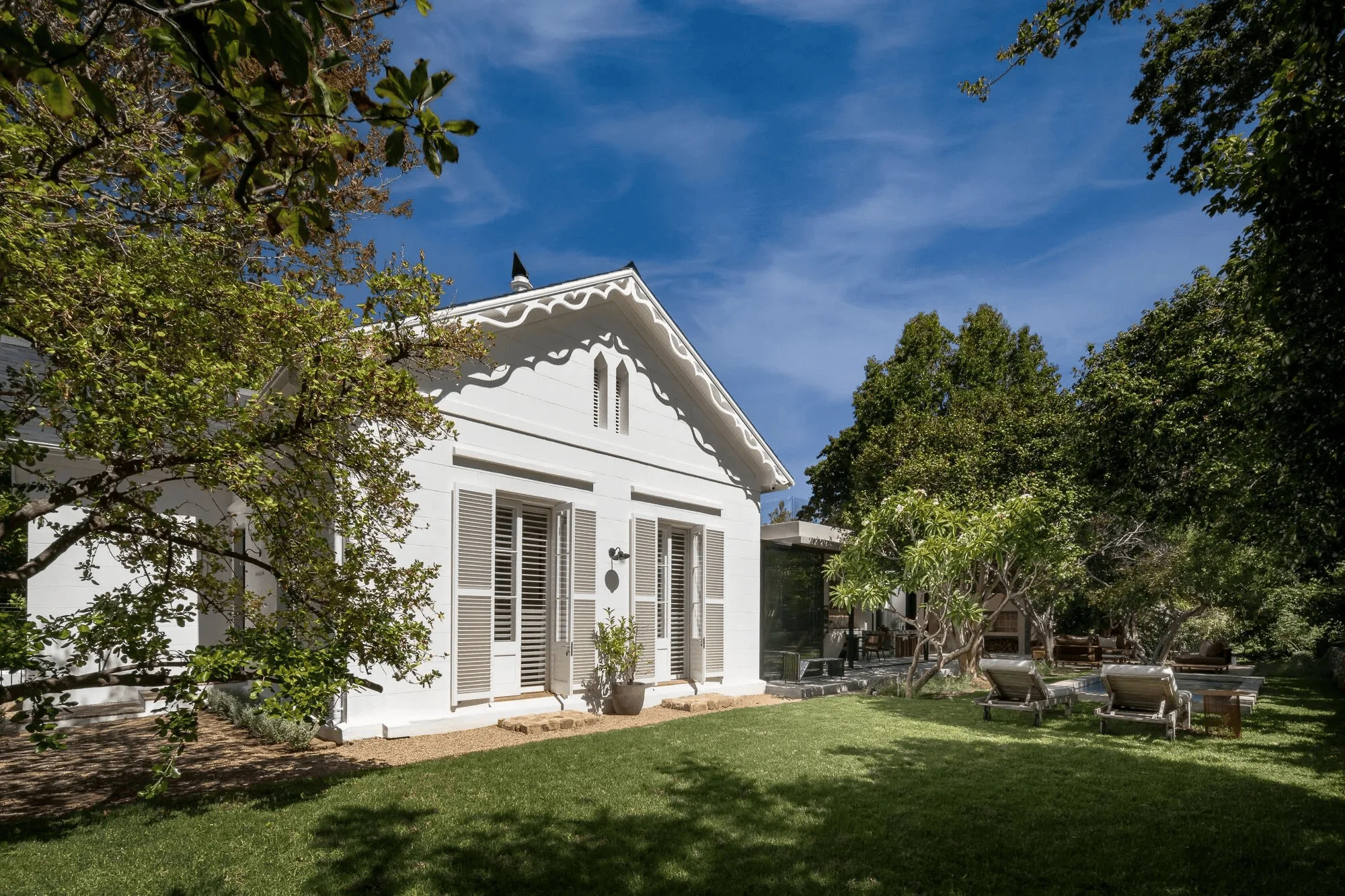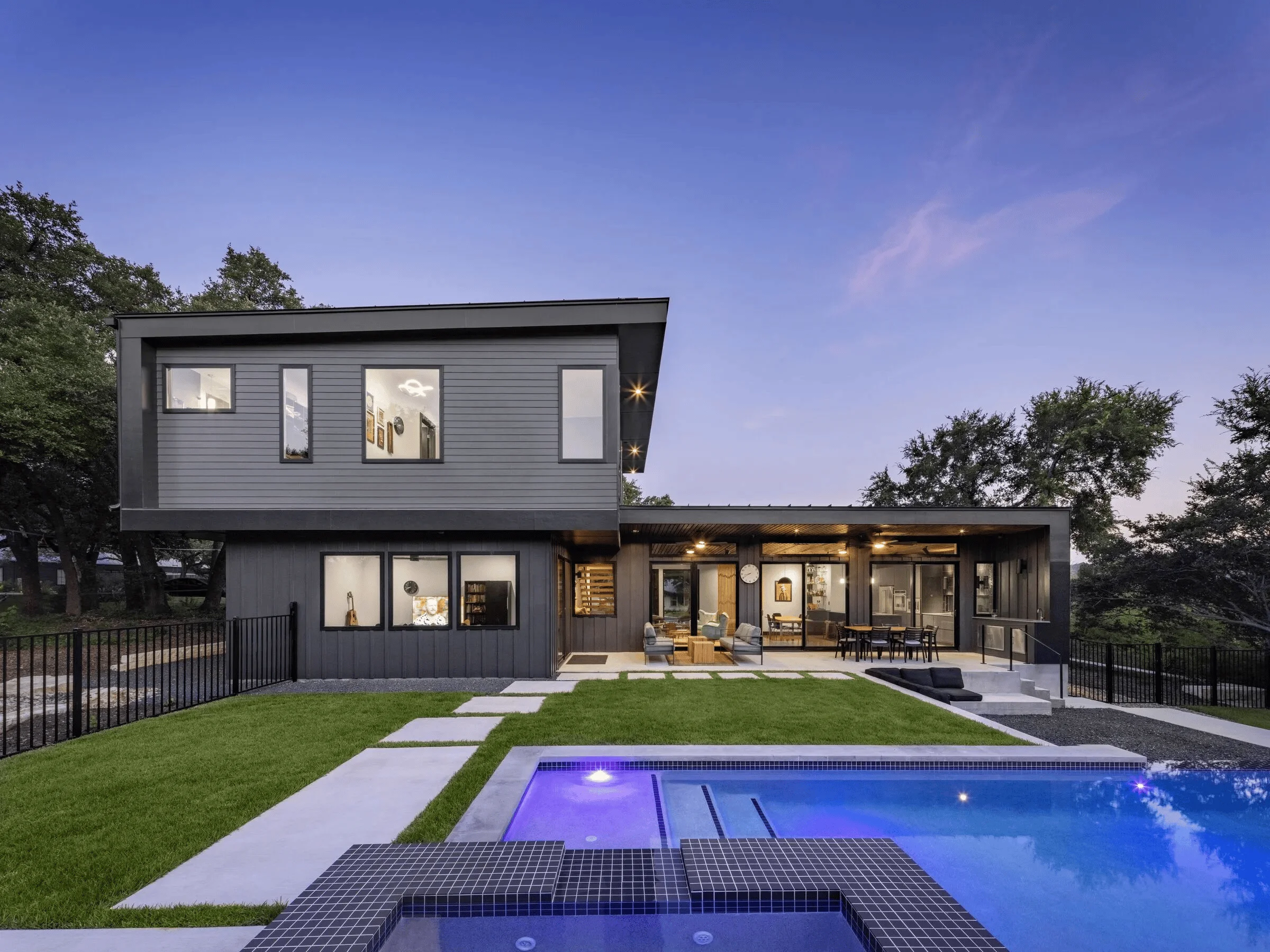Hot pot restaurant design in China uses red and gray to create warm dining experience.
Contents
Project Background and the Essence of Hot Pot
Hot pot, a communal dining experience characterized by boiling broth in a pot, has become a cherished culinary tradition in China, particularly due to its versatility and adaptability to different palates. It perfectly embodies the Chinese cultural values of warmth, togetherness, and celebration, making it a popular dining choice across the country. The restaurant’s design reflects these traditions, highlighting the social and communal aspects of hot pot dining while providing a modern and sophisticated environment. The tag of “Chinese Hot Pot Restaurant Design” perfectly captures the essence of this project and its relevance in the broader cultural context.
Color Palette and Visual Impact
The color palette, a bold yet balanced mix of rich red and textured gray, was thoughtfully selected to evoke the heartiness and warmth associated with hot pot, particularly the popular “Yang Xie Zi” (Lamb Spine) hot pot favored in Northern China. Red, being a vibrant and assertive color, symbolizes energy and appetite, stimulating the senses. In contrast, the raw and rugged texture of gray brings a grounding and balanced energy to the space, preventing it from becoming overly stimulating. This intriguing juxtaposition of vibrant red and subtle gray ensures that the ambiance remains inviting yet avoids overbearing intensity, ensuring guests enjoy the experience for a longer duration, and providing a sense of harmony with the hot pot tradition and its warmth. The chosen colors are a key aspect of the “Hot Pot Interior Design” strategy employed in the project, and the ‘Interior Design with Color’ is also a perfect description for the article.
Spatial Organization and Diner Flow
The original commercial space was irregular in shape, a common scenario in many urban settings. The design team adeptly addressed this by strategically incorporating a series of semi-circular walls, extending them from the front hall and aligning them with the contour of the irregular space. Each dining booth was meticulously designed with the cooking pot as its centerpiece, seamlessly weaving together multiple circular dining areas. This clever configuration not only accommodates the communal nature of hot pot dining but also fosters a sense of unity and connection among diners. Such a layout allows a sense of privacy, especially important for larger groups, promoting a more comfortable dining experience. The tag “Commercial Space Interior Design with Curved Wall” further emphasizes the spatial organization in the context of this project and the innovation used in the design.
Open Kitchen Concept and the Power of Visibility
Shopping mall environments often blur the boundaries between interior and exterior, and for a hot pot restaurant in this setting, a traditional entrance is not always necessary. Capitalizing on this characteristic, the designers strategically relocated the kitchen to the front, making it highly visible and placing it in close proximity to the public area. This “open kitchen” concept allows customers to observe the entire culinary process, from the preparation of the broth to the skillful handling of ingredients by the chefs. The concept allows for greater transparency, contributing to a more trustworthy and interactive dining experience. This direct view of the preparation process adds a layer of excitement and authenticity, creating a sense of interaction for the guest. This “Hot pot restaurant Design” element is a clever strategy in “Commercial Kitchen Design with Open Concept”, helping the restaurant connect with its customers and fostering a greater sense of trust and engagement.
Conclusion
The design of Chengsheng Hot Pot Restaurant is a successful combination of traditional hot pot culture and contemporary design principles. By utilizing vibrant colors, strategically organizing the space, and embracing the power of an open kitchen concept, the architects have created a warm, welcoming, and unique dining experience. This project showcases the importance of integrating cultural context into the design process and the ability to turn a seemingly conventional restaurant concept into a unique and engaging destination. The design strategy in this project is a brilliant example of applying the principles of ‘Restaurant Design Trends’ in achieving customer satisfaction and developing a unique restaurant brand.
Project Information:
Restaurant
Architects Studio
China
2023
Photography by Arch-Exist


